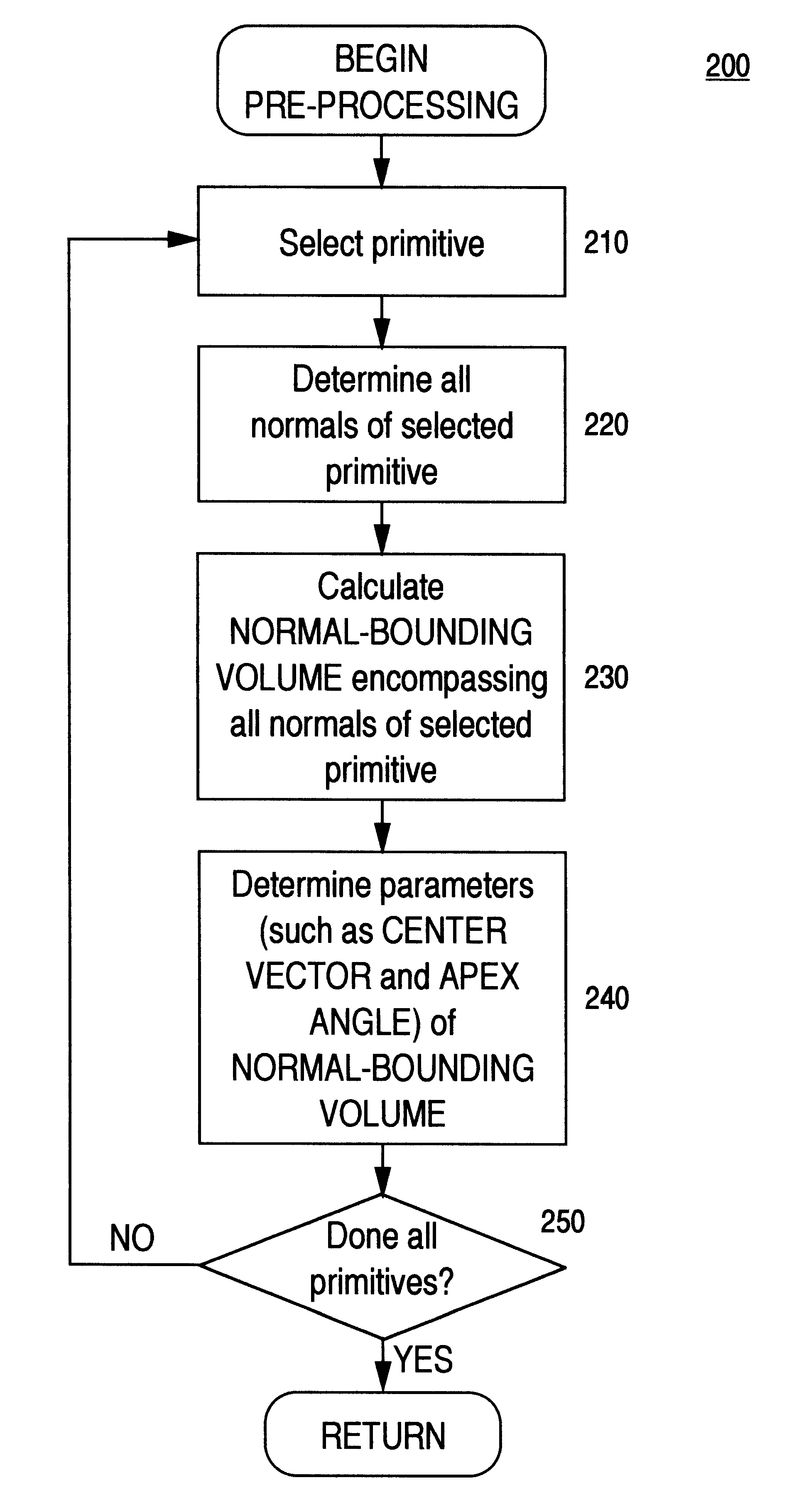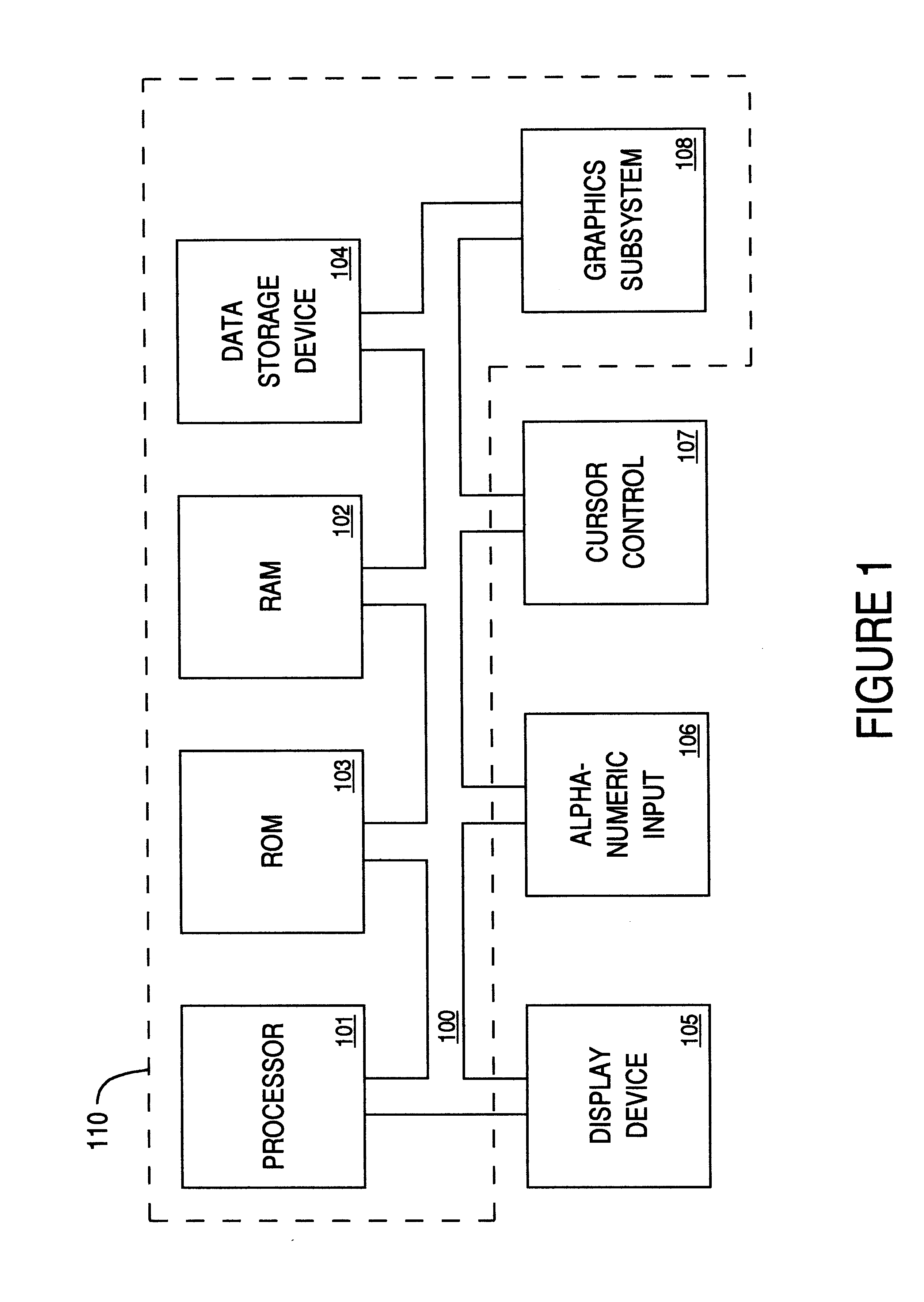Backface primitives culling
- Summary
- Abstract
- Description
- Claims
- Application Information
AI Technical Summary
Benefits of technology
Problems solved by technology
Method used
Image
Examples
Embodiment Construction
In conventional backface culling methods, each polygon of a 3-D model is processed individually to determine whether that polygon is backfacing or is visible. Naturally, in highly-complex 3-D models having millions of polygons, such a process is nearly as computational intensive as rendering. Therefore, conventional backface culling methods do not notably increase rendering efficiency. In the present invention, however, backface culling is performed at a primitive level. In other words, backface testing is performed for each of the primitives. If it is determined that a primitive is back-facing, the whole primitive is culled. This approach is validated by the observation that primitives typically contain many polygons, and polygons within the same primitive face the same general direction in most 3-D models. The present invention provides for unique and novel methods of efficiently determining whether a primitive is backfacing. One embodiment of the present invention is illustrated ...
PUM
 Login to View More
Login to View More Abstract
Description
Claims
Application Information
 Login to View More
Login to View More - R&D
- Intellectual Property
- Life Sciences
- Materials
- Tech Scout
- Unparalleled Data Quality
- Higher Quality Content
- 60% Fewer Hallucinations
Browse by: Latest US Patents, China's latest patents, Technical Efficacy Thesaurus, Application Domain, Technology Topic, Popular Technical Reports.
© 2025 PatSnap. All rights reserved.Legal|Privacy policy|Modern Slavery Act Transparency Statement|Sitemap|About US| Contact US: help@patsnap.com



